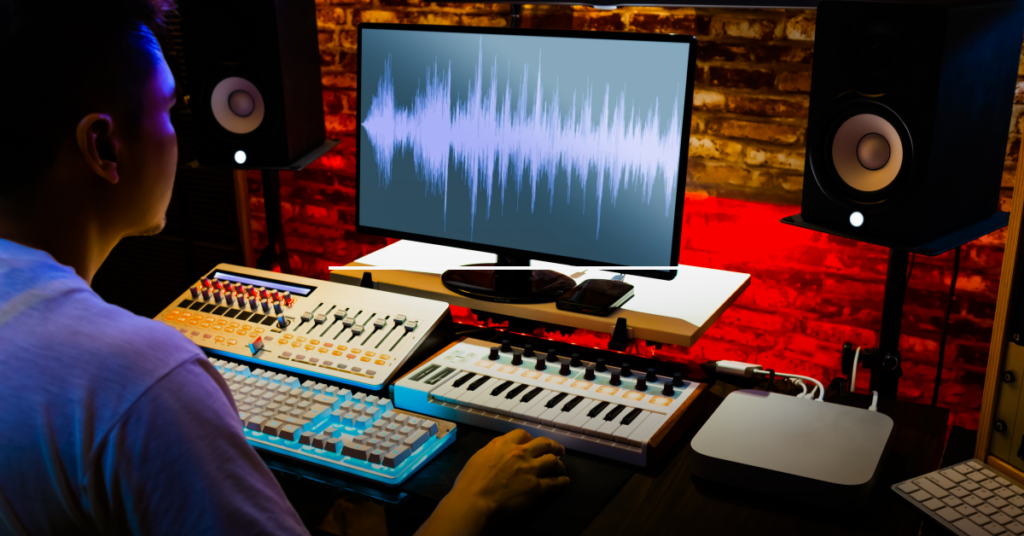“A great mix isn’t about how much you add; it’s about knowing what to leave out.“ – Andrew Scheps, Grammy-winning mix engineer

In a world where digital plugins are endless, mastering the art of minimalist mixing can be a refreshing—and highly effective—approach. Mixing with minimal plugins may sound limiting, but it can actually bring out the best in a song. By focusing on the essentials, you’ll create a clean, well-balanced mix that lets each element shine.
Here’s a guide to making the most of your tools with just a few plugins, from EQ to compression, and learning how to shape sound in a way that’s powerful and effortless.
Contents
1. Essential Plugins for a Minimalist Mix
When you’re only using a few plugins, it’s important to pick tools that cover multiple purposes or are versatile. Let’s break down the must-haves for a clean, professional mix.
Equalizer (EQ)
EQ is the backbone of any mix. It shapes the frequency balance and helps each element in the mix occupy its own space. Instead of using complex multi-band EQs or adding a different EQ plugin on every track, a basic parametric EQ can work wonders.
Example: Suppose you’re mixing a kick drum and bass guitar. They both share low frequencies, but you want to avoid muddiness in that area. Use a basic EQ on the bass to apply a slight cut around 50–60 Hz to carve out space for the kick, then boost it around 80 Hz on the kick drum EQ to give it some extra punch. The result is that both the kick and bass have their own defined spaces without clashing.
Compressor
A compressor controls the dynamic range, helping make sure no part of the mix sticks out too much. Instead of using multiple compressors with different settings, pick one compressor that’s versatile enough to handle everything from light glue compression on the mix bus to more intense compression for vocals or drums.
Example: Let’s say you’re working on vocals that have quiet verses and loud choruses. Instead of reaching for a limiter or multiple compressors, use a single compressor with a low ratio (around 3:1) and a slow attack time. This setup catches the louder peaks and smooths out the volume differences without squashing the sound.
Reverb
Reverb adds depth and space, but it can easily overwhelm a mix if overused. Instead of using multiple reverb plugins, try sending all tracks that need reverb to a shared reverb bus. This way, you create a cohesive space without each track having its own reverb.
Example: Set up a single reverb bus using a plate reverb for warmth and subtle depth. Send vocals, guitars, and a snare drum to this reverb, adjusting the send levels to create a natural space. You’ll get a sense of roominess without cluttering the mix with multiple reverbs fighting for attention.
Saturation
Saturation is like seasoning in cooking—it adds a bit of warmth and makes digital tracks feel more analog and full. Choose a saturation plugin with simple controls, like tape or tube saturation, and apply it subtly.
Example: On vocals, a little saturation can add presence and thickness, especially in the mid-range. Use a tube saturation plugin and dial in a gentle level, just enough to give the vocal warmth without distortion. It’ll help the vocal stand out without needing additional EQ or compression.
2. Key Techniques for a Minimalist Mix
Minimalist mixing isn’t just about using fewer plugins; it’s also about making the most of the tools and techniques you already have. Here are some core strategies to keep your mix clean, balanced, and effective.
Gain Staging
Gain staging is all about making sure every track sits at a healthy level before you start processing. Poor gain staging can lead to clipping, distortion, and even make your plugins work less effectively.
Example: Imagine a guitar track that’s recorded too hot (at a high level). If you try to EQ it, the boosted frequencies might distort. Lower the track’s input gain to around -18 dBFS so the EQ plugin has headroom to work effectively. This step prevents issues before they happen and ensures your effects work as intended.
Balancing Levels First
Before adding any plugins, start by balancing levels between all your tracks. A well-leveled mix can sound surprisingly good without any processing, and it highlights areas that need attention.
Example: Start with the drums, getting a good balance between the kick, snare, hi-hats, and cymbals. Then add the bass and make sure it complements the kick without overpowering it. By setting the levels of each track, you’ll start hearing how the mix works as a whole and only use plugins where absolutely necessary.
Subtractive EQ First
Subtractive EQ (cutting unwanted frequencies) is less likely to cause build-up in certain frequency areas than boosting.
Example: If your guitar track sounds a bit muddy, try cutting frequencies in the low-mid range (around 200-400 Hz) instead of boosting the high-end. This clears up space for vocals and drums without making the mix sound too sharp or shrill.
Selective Processing
Don’t feel obligated to apply EQ, compression, or reverb to every track. Only use plugins where there’s a specific problem or need.
Example: If the bass guitar sounds good on its own, leave it as-is and focus on making sure it sits well with the other instruments. Less processing often leads to a more natural, balanced sound.
3. Polishing the Mix with Minimal Processing on the Mix Bus
Once your individual tracks are balanced, you can add a little extra polish on the mix bus, where everything comes together. With a minimalist approach, just a few touches go a long way.
A Touch of Compression
On the mix bus, a low-ratio compressor can help glue the mix without compressing the life out of it. This is sometimes called “glue compression.”
Example: Set a ratio around 1.5:1 to 2:1, with a slow attack and medium release. You want just a touch of compression (1-2 dB gain reduction) to add cohesion without changing the dynamics too much.
Minor EQ Adjustments
Apply only minor EQ adjustments on the mix bus to enhance the overall clarity. If something needs more dramatic EQ, it’s best to fix it on the individual tracks.
Example: If the mix sounds a bit dull, add a gentle high shelf boost starting around 8 kHz. This can bring out the sparkle without making the mix too harsh.
Subtle Saturation
Saturation on the mix bus can add a bit of analog warmth and bring the whole mix together.
Example: Use a gentle saturation setting and apply just enough to add richness without distortion. This can give the final mix that cohesive, “finished” feel.
4. The Finishing Touch: Creative Techniques to Maximize Minimal Processing
Even with minimal plugins, you can add depth, movement, and character to your mix. Here are some advanced techniques to try:
Automation
Automation lets you create dynamics without over-processing. Adjust volume, panning, and reverb levels throughout the song to highlight certain moments.
Example: Automate the vocal reverb so it’s drier (less reverb) during verses and wetter (more reverb) during choruses. This creates contrast and makes the chorus sound larger without needing additional effects.
Panning for Depth
Instead of adding stereo widening plugins, strategic panning can give your mix width and depth.
Example: Pan guitars slightly left and right and keep lead vocals and bass centered. Add percussion elements like shakers or hi-hats slightly off-center. This creates space for each element to shine without muddying up the stereo field.
Parallel Processing
Parallel processing allows you to add intensity to specific elements without affecting the original signal.
Example: Set up a parallel compression bus for drums, where you can heavily compress a duplicate of the drum track and blend it with the original. This approach can add punch and energy without losing the natural sound of the drums.
Final Thoughts
Mixing with minimal plugins might seem restrictive, but it’s a powerful way to produce clean, professional results. By focusing on essential tools like EQ, compression, reverb, and a touch of saturation, you can highlight the best elements of your mix without overloading the sound. This approach encourages a hands-on relationship with the audio, allowing you to make mindful choices that enhance the music’s natural qualities.
In the end, a minimalist mix not only sounds authentic but also connects with listeners, providing a clean, balanced listening experience that stands out in a world of over-processed sound. Embrace the simplicity and let the music speak for itself.












![The 6 Best Digital Audio Workstations (DAWs) for Your Home Studio [2024] 3 Best DAWs](https://musicfevr.com/wp-content/uploads/2024/10/Best-DAWs.jpg)

